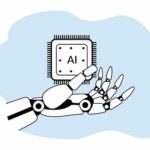What is Open Education?
Open education is a movement that attempts to increase access to education and learning by removing barriers. Some of these barriers include geographical location, funding, or specific admission requirements.
Open education is important in today’s learning environment because it aims to increase accessibility and participation, creating an inclusive and flexible space for all learners. With the accelerating use of technology and existing global barriers to education, open education is crucial for ensuring everyone has equal access to educational opportunities.
What has helped me understand the concept of open education is a YouTube video by Dr. Martin Weller, who discusses the differences between open and formal education and its significance.
The Importance of Open Pedagogy

Pedagogy is a word used to define how instructors teach. It is the practice and method of teaching. Open pedagogy is a teaching approach that emphasizes sharing and collaboration in the education process. It usually involves open licenses which improve the accessibility of teaching materials. It is significant in modern education because it transforms the traditional instructor-to-student relationship into a more interactive and participation-based learning experience. This collaboration can help learning further evolve, by influencing critical thinking and engagement.
This is often achieved by using open educational resources (OER) which are educational materials free for anyone to alter, use, or share. With the rise of online educational resources in modern education, sharing and collaboration become easier, even when students are in different time zones or geographical locations. From our weekly readings, the article “Attributes of Open Pedagogy: A Model for Using Open Educational Resources” highlights how different attributes associated with open pedagogy help develop transparency, connect communities, and help share ideas and resources.
This transformation is possible due to instructors having an altered role as a facilitator rather than the traditional lecturing style which can allow the relationship to be more equitable. By involving students in the modification and creation of learning materials, students can further enhance their connection with the teacher and other students, transforming traditional educational practices and developing stronger relationships.
An additional challenge of implementing open pedagogy is the stability of the traditional teaching methods. The same teaching methods that occurred sixty years ago lay the framework for today’s teaching, and educators who are experienced in the field may not want to shift to more collaborative methods. Another challenge is making sure the quality of the collaboration content allows it to be beneficial enough. Many classes I have taken at UVic are taught using traditional methods, while a select few have implemented open pedagogy, even though these classes had similar content. Personally, I prefer the open pedagogy approach as it is more collaborative.
A solution for this would be for institutions as a whole to incorporate open pedagogy temporarily for all educators to use to see if students or educators would benefit. Students could then write feedback surveys to show the educator evidence of more engagement or inclusion.
For the reader, could you see the solution I recommended working in different institutions? If so, how can advocacy help promote open pedagogy to educators who rely on traditional teaching methods?
Open Education Resources
Open Education Resources (OER) are educational materials that are freely available online for the public to use. Some examples of OERs are:
- Lecture notes
- Textbooks
- Multimedia
- Exams
- Other course materials
This short video by UNESCO explains what is an OER and how the public can utilize it.
Free resources can be extremely beneficial to students who may not personally own or have physical access to educational resources. From our weekly readings, the book chapter “A Brief History of Open Educational Resources” states that the core concept of OER is freedom of access, cost, and use. They also discuss how large classes of students across the world do not receive proper education due to a lack of finances and other resources. If access to educational content is free, OER can help underserved populations of students such as low-income families. The availability of free and open resources removes financial barriers allowing every student to have equal access to learning materials. This is important because education should be equal for all individuals, and every student has a right to learn no matter their circumstances. This impacts students by allowing them to become more engaged with the content, have more opportunities to collaborate with other students, and have increased accessibility and flexibility. Multimedia is an example that can help students collaborate and become engaged with each other to discuss course content. Free online resources in general are also easier to use when students may not have direct access to a campus or library and have to rely on resources from their computers.

Some additional challenges of implementing OER is that although resources may be free, accessing them still may require expensive technology that may not be easy to access. Not all students have access to a computer, which can serve as an interface to access thousands of free resources. Another challenge is accuracy and professionalism when it comes to free resources. Different resources can be modified by non-professionals which may make certain resources less useful.
A solution for this is a peer review process, to help solidify the quality of free resources. During my studies, I only referenced publication websites that I knew were peer reviewed, to make sure the posted information was correct and usable.
To have equal access to technology, universities and communities can fund free computer labs and libraries for the public to access. More libraries and learning environments created lead to more educational opportunities for the public. I find that the UVic library always has hundreds of students using the free computers on the main floor, which shows that students without computers or laptops are still able to access online resources.
Open Licensing
Open licensing is the framework that allows materials and resources to be freely used, adapted and shared. These licenses facilitate open educational practices by allowing resources to be collaboratively created and shared without the limitations of traditional copyright restrictions. This makes it simpler for students and instructors to share and access educational materials, influencing collaboration and engagement within the learning environment. This process can be broken down into:
- Use: Open licenses allow free use and enhance accessibility by removing barriers.
- Modification: Flexibility in modification of materials to be more customizable for students.
- Distribution: Open licenses allow sharing, allowing teachers to spread materials to the community.
Understanding open licensing is important for having clarity when it comes to providing and sharing materials. Open licensing processes also maximize the quality of the materials and resources, which fuels open pedagogy and open education within the learning environment.





